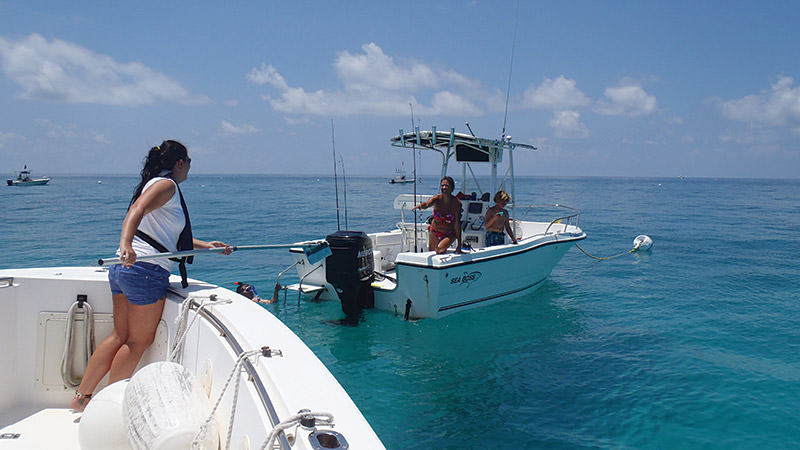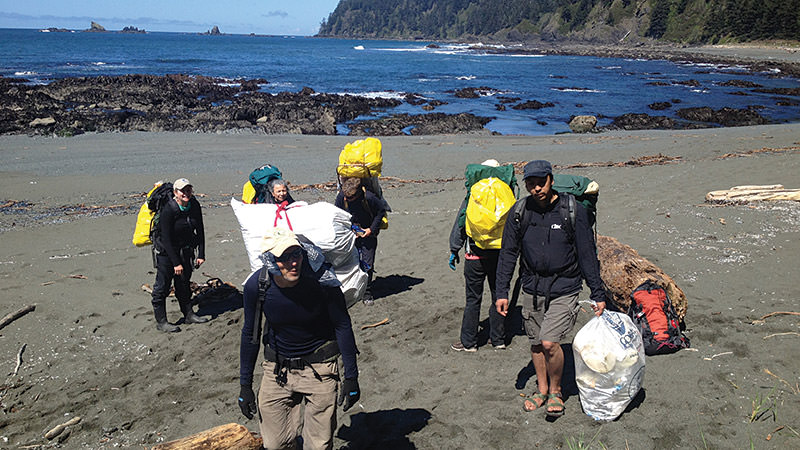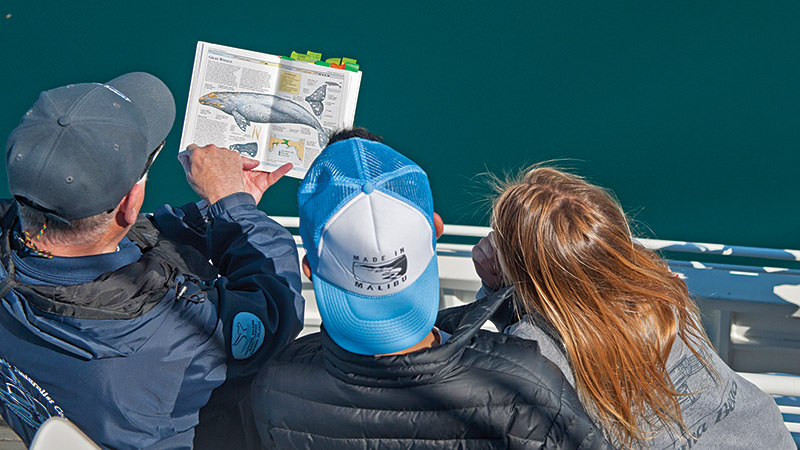From Compassion to Action
How do you protect 170,000 square miles of marine and Great Lakes waters?
by Dayna Rignanese
It takes a whole community. Each year, thousands of volunteers dedicate their time to making sanctuaries work.
This collaboration has been going on for decades. The first sanctuary volunteer programs launched in the mid-1990s, including Beach Watch at Greater Farallones National Marine Sanctuary and Team OCEAN at Florida Keys National Marine Sanctuary. Today, volunteers are an integral part of many sanctuary programs, contributing invaluable time and energy across the sanctuary system. The diverse skills, knowledge and support they provide help expand the reach of the national marine sanctuaries and build on the work of sanctuary staff.
As Claire Fackler, National Volunteer Coordinator for NOAA’s Office of National Marine Sanctuaries, explains it, “volunteers are an essential link into local communities that help broaden awareness, appreciation and ultimately stewardship of these underwater parks.”

Through activities like diving, participating in beach cleanups, and serving as visitor center docents, volunteers help ensure that the American public and other visitors learn about these special ocean areas and safeguard their protection now and for future generations.
Volunteers also help sanctuary staff better understand sanctuary ecosystems through citizen science projects. By collecting data, the general public can help scientists answer real-world questions. Citizen science programs engage volunteers in scientific study within the sanctuaries: volunteers participate in activities such as gathering important data on whale and seabird populations. These data are then used for scientific research and to help manage the sites across the system.
Volunteer programs continue to grow around the sanctuary system, and the total number of hours contributed rise every year. In 2015 alone, national marine sanctuary volunteers contributed over 149,000 hours across the system — a value of $3.4 million or 74 federal employee positions. Thanks to their dedication, sanctuary ecosystems can flourish, and the public can better understand these special places.
Want to help care for your national marine sanctuaries? To find out more about how you can volunteer for our special sanctuary places, visit sanctuaries.noaa.gov/involved/volunteer_future.html.





